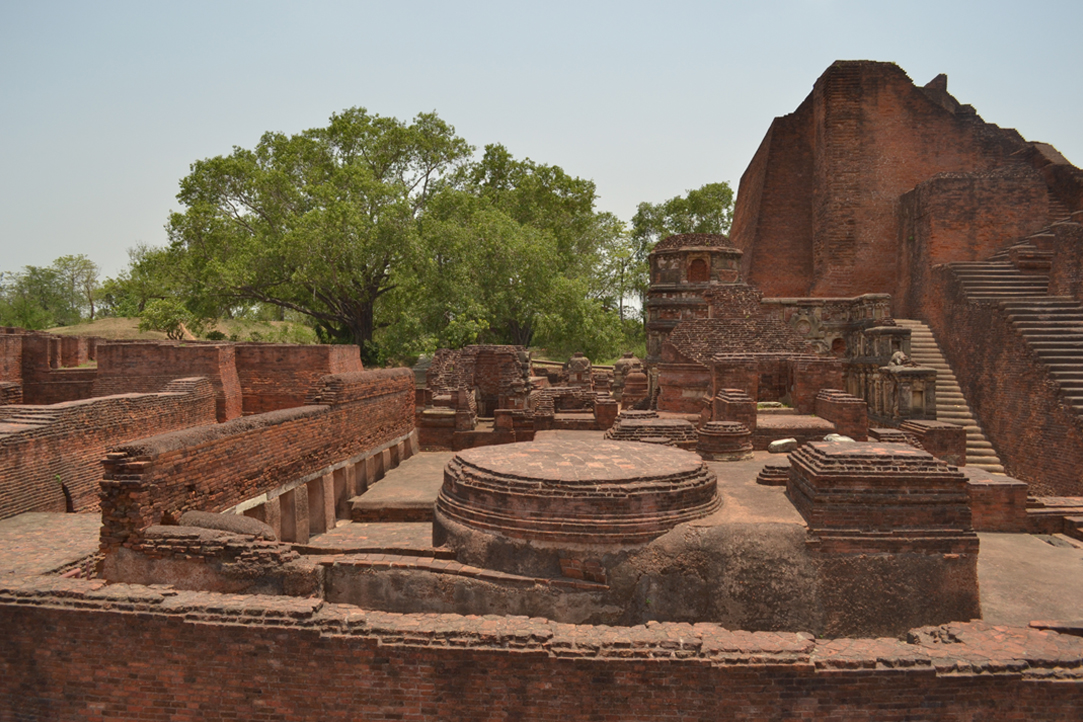Darjeeling: The Queen of the Hills in West Bengal Darjeeling, nestled in the Indian state of West Bengal, is one […]

About Nalanda University Ruins, Bihar
The Nalanda University Ruins in Bihar, India, are among the most historically significant sites in the world, representing the remains of one of the first residential universities in recorded history. Established in the 5th century CE during the Gupta Empire, Nalanda University was an international center for learning, attracting scholars and students from across Asia. It remained a thriving academic institution for over 700 years before it was destroyed in the 12th century by Turkish invaders led by Bakhtiyar Khilji.
The ruins are now a UNESCO World Heritage Site, and they provide a glimpse into the grandeur of the ancient university, which was once home to thousands of students and teachers. It is said that at its peak, the university housed around 10,000 students and 2,000 teachers, specializing in subjects such as Buddhist philosophy, logic, mathematics, medicine, and astronomy.
Historical and Cultural Importance
The layout of Nalanda University was meticulously planned, with large lecture halls, stupas, temples, dormitories, and monasteries. The red-brick structures that remain today give us a sense of the architectural and academic brilliance of the ancient institution.
The university’s curriculum wasn’t confined to religious studies; it also covered secular subjects such as astronomy, mathematics, and medicine. This academic diversity, along with its inclusive approach, made Nalanda a melting pot of cultures and intellectual traditions. Renowned scholars like Xuanzang and Yijing from China visited Nalanda in the 7th century, and their accounts offer valuable insights into the academic life and curriculum at Nalanda.
The campus boasted vast libraries known as “Dharma Gunj” or “Mountain of Truth,” containing thousands of manuscripts, scriptures, and texts. These texts were integral to the spread of Buddhist teachings across Asia. The destruction of the university by Bakhtiyar Khilji in 1193 marked a tragic end to this great institution, as its libraries were set on fire and the knowledge accumulated over centuries was lost.
Reaching Nalanda University Ruins
Nalanda is well-connected to major cities in Bihar and other parts of India. Here’s how you can reach the Nalanda University ruins:
By Air:
The nearest airport to Nalanda is the Jay Prakash Narayan International Airport in Patna, approximately 90 kilometers away. This airport is connected to major cities like Delhi, Kolkata, and Mumbai. Once you arrive at Patna, you can hire a taxi or take a bus to reach Nalanda. The drive from Patna to Nalanda takes around 2-3 hours, depending on traffic conditions.
By Rail:
The nearest railway station is Rajgir Railway Station, which is about 12 kilometers from the Nalanda University ruins. Rajgir has good connectivity to cities like Patna and Gaya. Another nearby railway station is Bihar Sharif Railway Station, located about 30 kilometers away. From these stations, you can easily hire a taxi or take a bus to reach the ruins.
If you’re traveling from other parts of India, you can take a train to Patna Junction or Gaya Junction, both of which are well-connected to Nalanda by road.
By Road:
Nalanda is easily accessible by road from various cities in Bihar and neighboring states. Regular buses run between Nalanda and nearby cities like Patna, Rajgir, and Gaya. You can also hire a private taxi or drive to Nalanda. The drive from Patna takes about 2-3 hours (90 kilometers), while the distance from Gaya is about 70 kilometers, and the journey takes around 1.5-2 hours.
Local Transportation:
Once you reach Nalanda, local transportation options include auto-rickshaws, cycle-rickshaws, and taxis, which are convenient for exploring the area. The ruins are spread over a large area, and many visitors prefer to explore them on foot to take in the rich historical atmosphere.
Exploring Nalanda University Ruins
The ruins of Nalanda University are extensive and offer a captivating experience for visitors interested in ancient history and Buddhist heritage. Some of the most prominent structures include the large stupas, which were used for meditation and rituals, and the monasteries where students lived and studied. The intricate carvings and inscriptions on the walls offer insights into the teachings and religious practices of the time.
The Nalanda Archaeological Museum, located nearby, houses many artifacts found during excavations, including statues, coins, and manuscripts. Visiting the museum is an excellent way to complement your exploration of the ruins and gain a deeper understanding of the university’s legacy.
Conclusion
The Nalanda University ruins in Bihar stand as a testament to India’s rich academic and cultural heritage. As one of the world’s oldest centers of learning, it played a crucial role in the development of Buddhist philosophy and global knowledge exchange. A visit to these ruins offers a profound glimpse into an era when India was at the forefront of intellectual and spiritual advancement. Whether you’re a history enthusiast or a spiritual seeker, Nalanda provides a meaningful and enriching experience.

